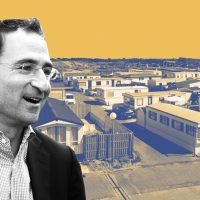The increased attention to housing affordability has elevated the cause of manufactured homes, which account for 6 percent of the nation’s housing stock and a far higher share of its low-cost housing, despite being unsubsidized.
The Biden administration just changed some rules to increase production of manufactured housing and make it safer and more attractive. (The Department of Housing and Urban Development sets design and construction standards for units built after June 15, 1976.) The biggest change is to allow single-family manufactured homes to have up to four dwelling units.
That could boost the sector’s share of single-family home production, which has averaged 10 percent in recent years — half of what it was from 1975 to the late 1990s.
HUD is also doing away with an unnecessary inspection for a common roof type and gas-fired tankless water heaters, and making open floor plans possible. Previously, the government made it easier to get a loan to buy a manufactured home, among other improvements.
All that is great, but the fundamental flaw of manufactured housing remains.
Owners of these units typically don’t own the land under them; they rent space in trailer parks. And mobile homes, despite their name, are hardly mobile. Relocating one can cost $10,000 — more than most of their residents can afford.
Even if owners had the money to move their homes somewhere cheaper, it’s typically not worth it. Besides, finding a more affordable plot can be impossible, because towns often pass rules to keep mobile homes out.
So if a trailer park raises the lot rents and fees, the residents generally have to pay up. They are essentially hostages. Some real estate investors, private equity firms and even Warren Buffett have taken advantage of this by buying parks from longtime owners who rarely spruced them up and kept rents low. To be sure, improvements to properties are welcomed by some residents, despite the rent increases. But tenants who cannot afford them are screwed.
There’s more.
Mobile homes, like cars, become less valuable as they age — unlike traditional homes, which tend to gain value because the land beneath them does. (You’ve heard the axiom: “Buy land — they’re not making it anymore.”) That’s why loans to buy these homes have shorter terms and higher interest rates than conventional mortgages. Mobile home owners don’t build equity over time; they lose it.
Another problem: Hurricanes, tornadoes and floods hit mobile homes the hardest. Vast improvements have been made in making them wind-resistant, but older ones are especially vulnerable, and extreme weather fueled by climate change will render them more so.
But the big issue remains the ownership model. Building homes in factories makes sense. Putting them on rented land, not so much.
Read more



